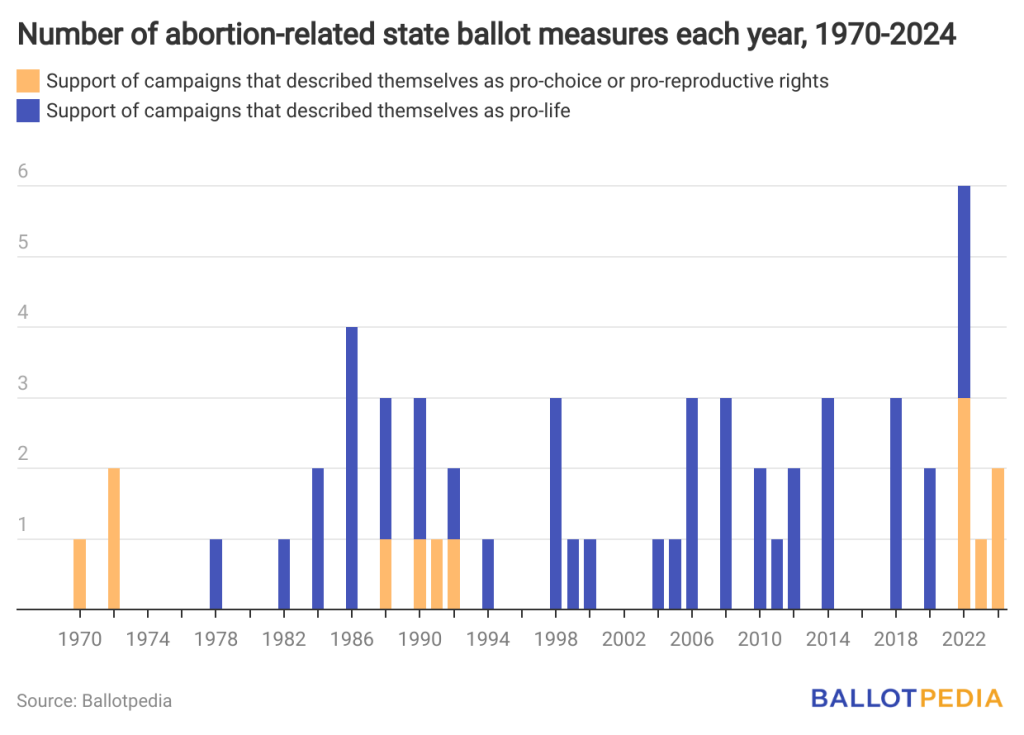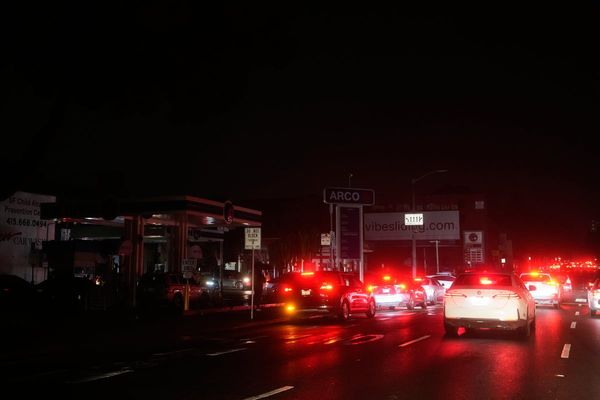In Ohio, voters will decide on Issue 1 on Nov. 7, 2023. Issue 1 would establish a state constitutional right to “make and carry out one’s own reproductive decisions,” including abortion, contraception, and other reproductive matters. Issue 1 would allow the state to restrict abortion after fetal viability, except when “necessary to protect the pregnant patient’s life or health.”
Ohio Issue 1 is the fourth ballot measure to propose a state constitutional right to an abortion. In 2022, voters in three other states—California, Michigan, and Vermont—approved ballot measures providing a state constitutional right to an abortion. These votes followed the U.S. Supreme Court’s decision in Dobbs v. Jackson Women’s Health Organization, which found there is no federal constitutional right to abortion, thus overruling Roe v. Wade.
Between 1970 and Nov. 2022, voters decided on 53 abortion-related ballot measures. Most—43 (81)—of them had the support of organizations that described themselves as pro-life. Voters approved 11 (26%) and rejected 32 (74%) of these measures. Ten (19%) received the support of organizations describing themselves as pro-choice or pro-reproductive rights. Voters approved seven (70%) and rejected three (30%) of these measures.

In 2022, there were a total of six abortion-related measures on the ballot. The three ballot measures that had the support of organizations describing themselves as pro-choice were approved, while the three measures that had the support of organizations describing themselves as pro-life were defeated.
The first abortion-related ballot measure to appear on the ballot was Washington Referendum 20, which voters approved. In 1970, Referendum 20 legalized abortion in the state of Washington—three years before Roe v. Wade. Measures to legalize abortion were proposed in Michigan and North Dakota in 1972; both were defeated. After the U.S. Supreme Court decided Roe v. Wade in 1973, there were no abortion-related ballot measures until 1978. Oregon Measure 7, which was defeated in 1978, was the first of several ballot measures designed to prohibit the use of public funds for abortions. In 1986, Massachusetts and Rhode Island became the first two states to vote on constitutional amendments that would have provided that the state governments could prohibit or regulate abortion in the event that Roe v. Wade was revised or overturned. Both constitutional amendments were defeated.
The abortion-related ballot measures can be grouped based on subtopics, such as personhood amendments, prohibiting public funding, and parental notification.
A personhood amendment defines legal personhood as beginning at a period prior to birth, such as conception or fertilization. The first personhood amendment appeared on the ballot in 1986 in Rhode Island. The most recent one to appear on the ballot was in Colorado in 2014. There have been six personhood amendments in total, and each one was defeated.
Voters decided on the first measure to prohibit public funding of abortion in 1978, and seven more of these measures appeared on the ballot during the 1980’s. Voters decided on 11 measures to prohibit public funding between 1978 and 2018. Voters approved three of these measures and defeated eight. The last one to appear on the ballot was in Oregon in 2018, which voters rejected.
The first parental notification measure, which was defeated, was on the ballot in Oregon in 1990. In 1998, the second parental notification measure, Colorado Initiative 12, was approved. The most recent one, which voters approved, was in Montana in 2012. There have been nine parental notification measures between 1990 and 2012, of which four were approved and five were defeated.
In 1992, voters approved Maryland Question 6, which was the last ballot measure, until 2022, designed to enact a law that organizations described as pro-choice/pro-reproductive rights supported.
Ohio is the only state deciding on an abortion-related measure in 2023.
In 2024, voters in New York and Maryland will decide on abortion-related constitutional amendments. Voters in Maryland will decide on an amendment to establish a right to reproductive freedom, defined to include abortion, and voters in New York will decide on a constitutional amendment to prohibit the denial of rights to any person based on their “pregnancy, pregnancy outcomes, and reproductive healthcare and autonomy,” along with other classes like ethnicity, disability, age, and sex. Measures related to abortion have also been proposed for 2024 in Arizona, Colorado, Florida, Iowa, Missouri, Nebraska, Nevada, Pennsylvania, and South Dakota.
Additional reading







